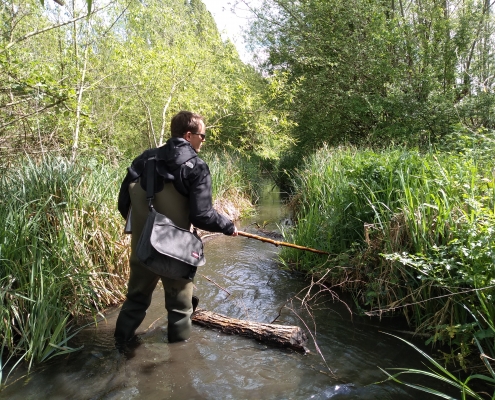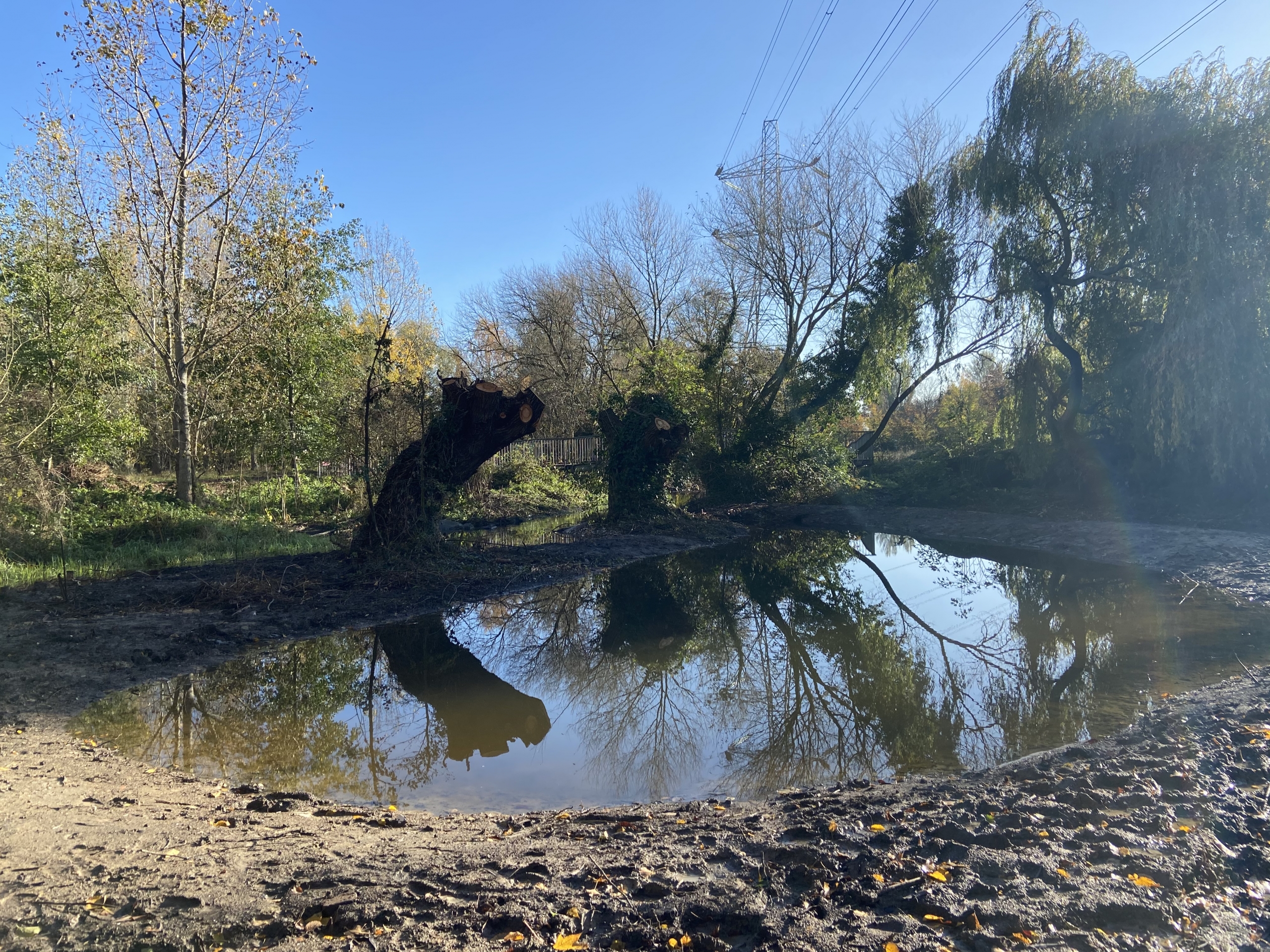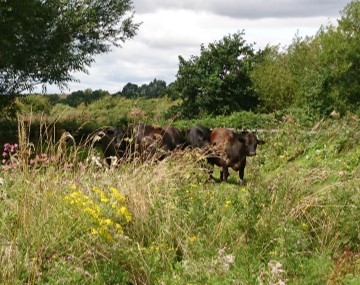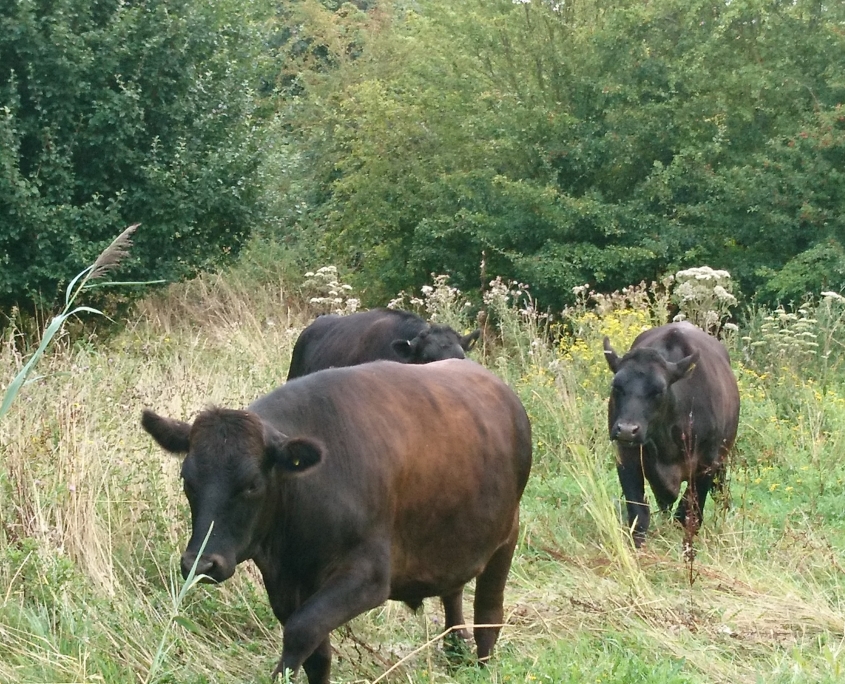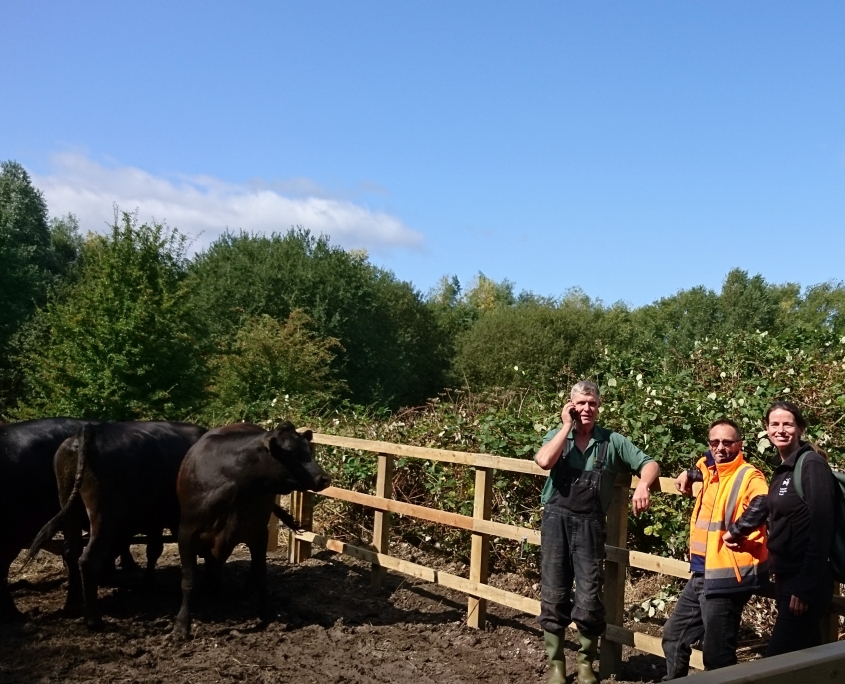River Enhancement
The aim of the Riverside Enhancement Project was to improve the River Ash (near to the Bronzefield Prison) for wildlife and people. The River Ash is a distributary of the River Colne that flows for 10km between Staines and Shepperton. This once natural river was heavily impacted by urbanisation, which resulted in many of the river’s natural features being lost and the valuable habitat it once offered to wildlife becoming degraded. The river had poor connectivity with the surrounding floodplain, which once provided extensive marsh habitat, providing a diverse array of flora and fauna and offering a home to both terrestrial and aquatic wildlife.
News
River Ranger working in the River Ash
River Ash Improvements Update 2021
The River Ash in Ashford was re-naturalised in 2020 for the benefit of wildlife and people(see more detail below), learn more here about how these improvements are bedding in.
River Ash Improvement 2020
The River Ash is a distributary of the River Colne which flows for 10km between Staines and Shepperton. It was once a natural river but has been directly impacted by urbanisation resulting in many of the river’s natural features being lost and the valuable habitat it once offered to wildlife becoming degraded. The Colne Valley Regional Park has worked with Spelthorne Council, The Environment Agency and Spelthorne Natural History Society to successfully deliver a project to re-naturalise the River Ash adjacent to Bronzefield Prison in Ashford.
Tree pollarding increasing sunlight for the river. Berm and gravel riffle installation providing a range of flow types and water depths.
Riverside Enhancement Habitat Improvements
During 2019 we had been working hard to improve an area of Staines Moor SSSI (site of special scientific interest) as part of our riverside enhancement project. The River Colne runs through Staines Moor and a variety of important habitats are found along its edges. The part of Staines Moor owned by Thames Water, sometimes referred to as Stanwell Moor, hadn’t been actively managed for some time. Large numbers of willow trees and hawthorn bushes had started to encroach on what is historically a uniquely flat moorland that was very important for ground nesting birds and other wildlife. This project aimed to try and reverse this trend and bring the moor back into its traditional, historic state. We’ve made a start on this by removing a large portion of willow from one of the on-site ponds and by felling a lot of hawthorn bushes on the previously open moor. The introduction of grazing cattle has helped get on top of long, coarse grasses to provide a much better habitat for a variety of wildflowers. This in turn will attract more insects and their predators and greatly increase the biodiversity on the site. We have also started work on pollarding (a technique used to reduce the size of trees) willow over the Bonehead Ditch. The Bonehead Ditch runs along the eastern edge of Staines Moor and is an off-shoot of the River Colne. Over years of little management, large willow trees have began to block out light from reaching the water. This means the aquatic plants do not have the food source they require to survive and as such it leads to a drastic loss of biodiversity. We have started at the northern end of the bonehead ditch by pollarding selected trees that were hanging over the channel. This will allow for aquatic vegetation to thrive and will help kick start a vibrant underwater ecosystem. All these changes are serving to improve the biodiversity value of a small portion of a historic and ancient landscape. We hope that surveys at the end of the 3 year project will show the real positive impact that these changes have made on the flora and fauna of Staines Moor SSSI.
